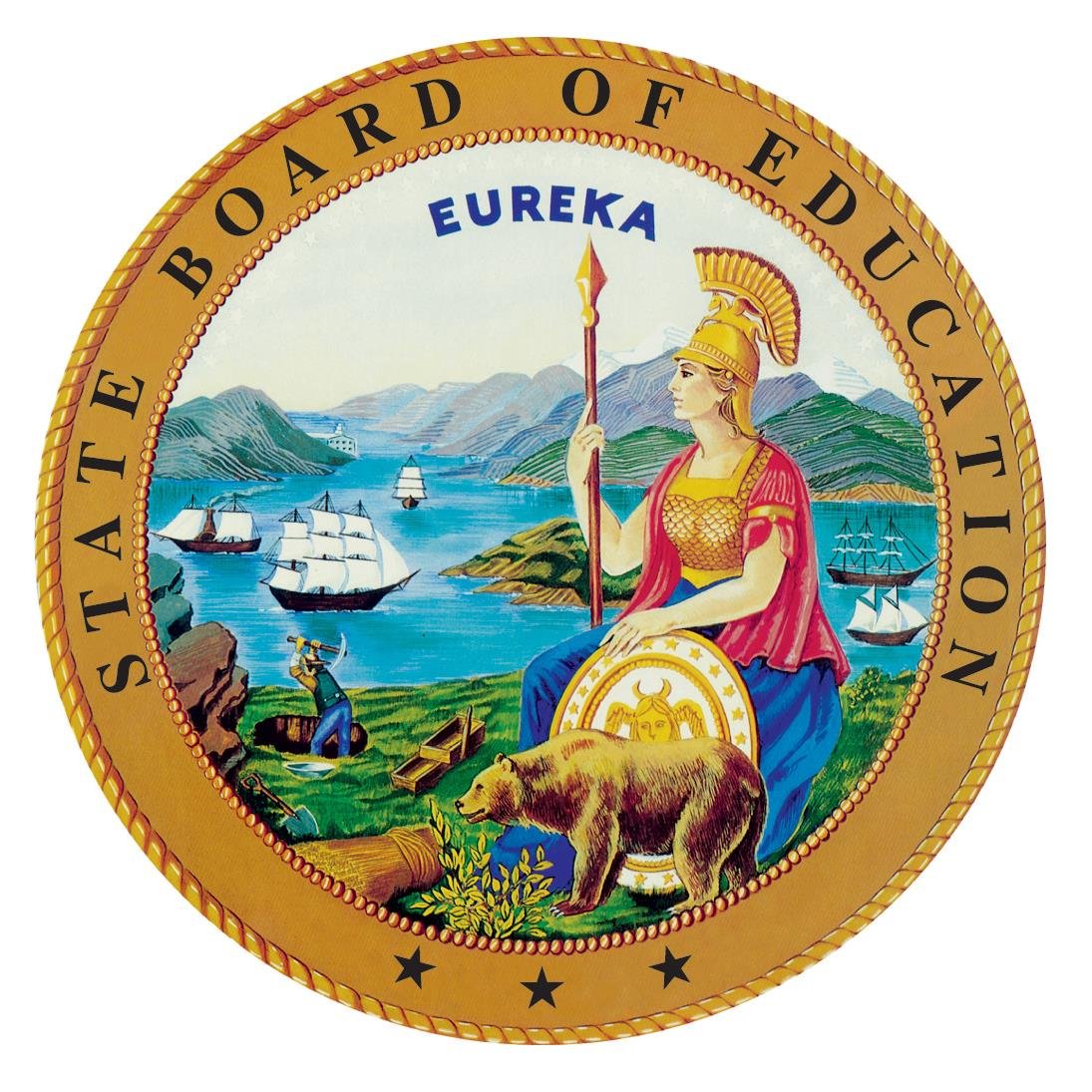The California State Board of Education convened May 18 for its first in-person session in two years to discuss items on community schools grant allocations, physical education flexibilities and more.
Gov. Gavin Newsom included in the May Budget Revision an additional $1.5 billion in one-time Proposition 98 General Fund to expand access and meet demand for the California Community Schools Partnership Program (CCSPP), which has far exceeded what was provided in the 2021 Budget Act.
“The enthusiasm from the field is palpable,” said Board President Linda Darling-Hammond.
The board continued moving ahead with the original $3 billion CCSPP funds, approved last year by the Legislature to establish new and expand existing community schools, by approving $635 million in planning and implementation grants for about 265 school districts, county offices of education and charter schools.
Nearly 200 local educational agencies with no existing community schools will receive $200,000 two-year planning grants in the first round. Priority was given to applicants with schools in which 80 percent or more of the total student population are included in the unduplicated student count and to LEAs serving rural and small schools.
Approximately 70 LEAs with at least some existing community school infrastructure will receive implementation grants with each school receiving over the course of five years between $712,500 for those with fewer than 150 students to $2.375 million for schools with more than 2,000 students. Schools serving at least 80 percent low-income children will receive priority funding. Districts and charter schools will be required to match one-third of their allotted state grants.
Board member Haydee Rodriguez asked California Department of Education staff if there will be changes made to the California School Dashboard as more schools begin to shift toward a community school model — Will dashboards be different for community schools? Will there be different criteria added?
Deputy Superintendent of Public Instruction Steve Zimmer acknowledged that while he doesn’t have a concrete answer now, “it’s something that we do need to prioritize and consider.”
In January, the board approved a CCSPP Framework, which details the key roles and responsibilities of local, county, regional and state partners; best practices; four cornerstone commitments and more. Throughout the process, CDE staff and members of the board have stressed that community schools go beyond providing resources such as medical and dental care and mental and behavioral health services. Rather, the model hinges on a combination of academics with a wide range of vital in-house services, supports and opportunities that are integral to promoting children’s learning and overall development through strong partnerships, collaborative leadership and authentic community engagement.
“We are taking many of the best elements in terms of the four principles of the framework from our national colleagues and also uniquely lifting up what is most resonant and innovative and true to California, which is a very justice and equity-based approach,” said board member Kim Pattillo Brownson. “The approach of bringing a whole child, whole student set of services and really, acknowledgments of who children are when they come into schools, I think is just incredibly exciting, important and I’m so proud that California is leaning into this.”
To further support these efforts, the State Board approved CDE’s recommendation to establish the Alameda County Office of Education as lead technical assistance center (TAC) to head the statewide regional TACs responsible for outreach and technical assistance to potential applicants as needed before or after awarding a contract under the CCAPP; and the development of community school resources, sharing of best practices and data collection.
Alameda COE will work with CDE to build content and overarching methodology for CCSPP technical assistance, facilitate a community of practice among the regional TACs, coordinate areas of expertise among the regional TACs and create a developmental implementation rubric to articulate community school implementation benchmarks.
Implementation and collaboration among TACs and others will be crucial in the coming months, Board Vice President Cynthia Glover-Woods noted. “Even more essential is what we heard echoed many times in the public comments which is that authentic collaboration with parents and families and students and communities,” she said.
Academic and physical education testing changes
Per staff recommendations, the board approved the proposed 2021–22 apportionment rates for the California Assessment of Student Performance and Progress and the English Language Proficiency Assessments for California. The assessment apportionment funds are unrestricted funds to reimburse LEAs for all staffing costs associated with testing; transportation costs for delivering and retrieving tests and test materials within the LEA; and expenses incurred at the LEA and site level related to testing. A breakdown of the rates as well as an update on assessment activities can be found here.
At the same time, the board also approved the proposed Alternate English Language Proficiency Assessments for California threshold scores for 2021–22 and beyond, found in attachment four within the item. The Alternate ELPAC will be the first California state-administered test of English language proficiency for students whose primary language is a language other than English and who have been found eligible for alternate assessments by their individualized education program team.
The board also approved a Finding of Emergency and readopted Proposed Emergency Regulations and Amendments to provide LEAs with some flexibility related to the California Physical Fitness Test (PFT), typically administered in spring to students in grades five, seven and nine to assess six areas of fitness.
The passage of Senate Bill 820 in 2020 requires the CDE to consult with partners with expertise in fitness, adapted physical education, gender identity, body image and students with disabilities in order to recommend improvements to the PFT and its administration. The State Superintendent of Public Instruction must submit a report with these recommendations to the appropriate fiscal and policy committees of the Legislature, the Department of Finance and the SBE by Nov. 1 of this year. However, LEAs would be required to administer the assessment as is this spring without consideration for recent concerns regarding the equitability and accessibility of the PFT. The SBE approved the emergency PFT regulations at its January meeting so the regulations will be in effect for the 2021–22 assessment time window while conducting the rulemaking process for the permanent PFT regulations.
Finally, the board approved the commencement of a 45-day public comment period for proposed amendments to California Code of Regulations related to the PFT. Amendments are included in attachment three.
In other State Board meeting news:
- Darling-Hammond provided insight into the status of the revised Math Framework, which received more than 300 comments during the last public review period that ended on May 16, “many of them quite meaty,” she said. “The work now of CDE staff is to review, organize and evaluate the comments to develop a plan for revision. Once we have an understanding of the scope of the proposed changes, we will need to make a determination about when the framework is likely to come before the State Board. It’s important that we get this framework right.” CSBA submitted comments to the framework seeking revisions that take into account the additional resources needed for implementation. Specifically, the comments highlight the framework’s heavy reliance on technology and the important role that professional development will play — resources and support that not all districts will have readily available.
- The board approved Career Technical Education Incentive Grant allocations for fiscal year 2021–22, and presented an allocation formula, specific funding amounts and number of grant awards, purposes for grant fund use and allowable and non-allowable expenditures.
- The board approved a list of remaining 2021–22 Comprehensive Support and Improvement plans for schools that were identified with the 2019 Dashboard. The State Board approves these final plans to meet ESSA standards, which “requires local educational agencies, in partnership with stakeholders, to develop and implement a comprehensive support and improvement (CSI) plan to improve student outcomes for each school identified for CSI.”
- The board approved 2021–22 consolidated applications — the annual fiscal data collected from the LEAs as required under federal law. About $2.1 billion in federal funds are distributed annually through this process to support low-income, rural and immigrant youth, English learners and more.
The next State Board meeting is scheduled for July 13–14, 2022. View the full meeting calendar.




